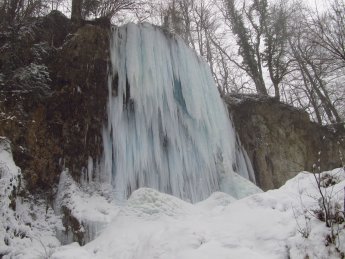Papuk Geopark, Croatia
 The Papuk Geopark from Croatia, Slavonia was our guest during the European Geoparks Week on 18-19 May in Tihany, in the Lavender House Visitor Centre. Our mate Geopark has been a member of the European Geoparks Network since 2007.
The Papuk Geopark from Croatia, Slavonia was our guest during the European Geoparks Week on 18-19 May in Tihany, in the Lavender House Visitor Centre. Our mate Geopark has been a member of the European Geoparks Network since 2007.
The Papuk Nature Park was established in 1999 on a 336 km2 large area on the basis of its extraordinary geological and biological diversity and valuable cultural heritage. The Papuk Mountains is the most beautiful mountains in Slavonia, the highest point of the park is the 953 m high Papuk Mountain.
Since the very establishment of the Papuk Nature Park, its management authority has recognised the outstanding value of its geological heritage and the idea of joining the European Geopark Network has been born.
As a result of the submitted Application Dossier – developed by the Papuk Nature Park Authority and the representatives of Croatian Geological Survey and Zagreb University – and the successful evaluation field visit, the nature park became the first Geopark of Croatia in 2007, joining to the European Geoparks Network and the Global Geoparks Network.
 Countless historical traces of human activities were found in the Papuk Mountains. The geological diversity has created numerous different ecosystems. The most endangered, rare and protected plant species live on calcareous grasslands. Countless historical traces of human activities were found in the Papuk Mountains. Eight medieval fortresses have become inseparable parts of the landscape during the centuries. The inhabitants living at the foot of the mountains have always been closely connected to the local natural resources. A more than 800 years old wine-growing tradition exists on the Southern slopes; you can taste fine wines even today. The pleasant natural surrounding with numerous tourism activities attracts visitors to Papuk Geopark. Paragliding, mountain biking, sport climbing are only a few possibilities for an active vacation.
Countless historical traces of human activities were found in the Papuk Mountains. The geological diversity has created numerous different ecosystems. The most endangered, rare and protected plant species live on calcareous grasslands. Countless historical traces of human activities were found in the Papuk Mountains. Eight medieval fortresses have become inseparable parts of the landscape during the centuries. The inhabitants living at the foot of the mountains have always been closely connected to the local natural resources. A more than 800 years old wine-growing tradition exists on the Southern slopes; you can taste fine wines even today. The pleasant natural surrounding with numerous tourism activities attracts visitors to Papuk Geopark. Paragliding, mountain biking, sport climbing are only a few possibilities for an active vacation.
The spectacular columnar jointed volcanic rock of Rupnica was declared protected in 1948 as geological monument of nature. During the Miocene geological era river, lake and marine sediments were deposited on the area. Palaeoflora and marine organisms' fossils can be found in those deposits, telling the geological story of the area. Volcanic activity was also present during the Miocene, leaving its traces in the pyroclastic rocks as well.  The youngest rock of the Geopark is the tuff of Mt. Papuk, which at Jankovac forms a 35 m high barrier, forming the wonderful waterfall of Skakavac, which is the most spectacular site of the Geopark. Several karst morphological phenomena can be observed and enjoyed in Papuk Geopark: abysses (Uviraljka with 200 m of underground canals), caves (Suhodolka 90 m deep), caverns, sinkholes.
The youngest rock of the Geopark is the tuff of Mt. Papuk, which at Jankovac forms a 35 m high barrier, forming the wonderful waterfall of Skakavac, which is the most spectacular site of the Geopark. Several karst morphological phenomena can be observed and enjoyed in Papuk Geopark: abysses (Uviraljka with 200 m of underground canals), caves (Suhodolka 90 m deep), caverns, sinkholes.
Geopark membership raises awareness of importance of geological conservation and contributes to promotion of local and regional products along with local crafts, events, festivals, local traditions and accommodation.
The functioning Geopark is also a great opportunity to introduce visitors to sites that tell the 600 million-year story of the planet Earth.
The desire to extend the boundary of the Papuk Geopark has arisen from the need to improve cooperation with the local communities and the need for future sustainable development of the whole, wider area. To extend the area of the Papuk European and Global Geopark, a new Application Document was submitted to the European Geoparks Network. The decision about the extension will be made in September 2013.
The news about the Papuk Geopark's event in the Bakony–Balaton Geopark on 18-19 May 2013 can be read here (and a nice photo gallery is also available about the event). The programmes of the European Geoparks Week in Papuk Geopark can be downloaded from here.
The official website of Papuk Geopark can be reached here. Visit our mate Geopark as well, as soon as you can!







